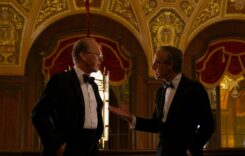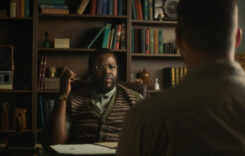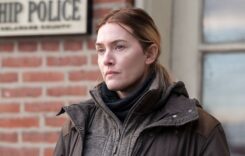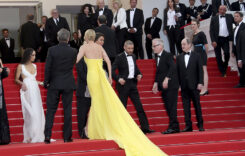JANUARY 10, 2017
Over 25 years in the making, “Silence” is the long-gestating historical epic about loyalty and faith that has been a dream project of legendary director Martin Scorsese, for whom religion has been a prominent thread throughout most of his films.
Based on the 1966 novel by Shūsaku Endō, “Silence” is initially set in 1640 Portugal, where two Jesuit priests, Father Sebastião Rodrigues (Andrew Garfield) and Father Francisco Garupe (Adam Driver), learn that their mentor Father Cristóvão Ferreira (Liam Neeson), a missionary who is trying to convert the Japanese to Catholicism, has been taken captive and committed apostasy, a public renunciation of his faith.
Once in Japan, the pair soon find that their new home is not the most hospitable locale for Jesuit priests, as the local pocket of Christians, threatened with torture, are forced to worship in secret. The priests’ presence soon comes to the attention of Inoue Masashige (Issey Ogata, who steals the movie), an inquisitor who uses his quirky style to get visiting priests and worshipers to commit apostasy. At that moment, the film, which was telling a promising search and rescue story turns into one about Fr. Rodrigues’ sudden crisis of faith.
Faith and forgiveness have always been front and center in the Scorsese playbook, especially in his gangster movies. One of the most famous lines in Scorsese’s breakthrough film “Mean Streets” speaks to that idea directly:
“You don’t make up for your sins in church. You do it in the streets. You do it at home. All the rest is BS and you know it.”
That was true in the streets of 1970s America and that mindset was even true in the 1600s, as “Silence” amply proves. But most of the instances where Scorsese has dealt with faith in his films, the subject has been subtly woven into an entertaining and engaging story, such as in his gangster films.
In “Silence,” however, the priests’ crises of faith is the basis for the film’s entire story, and at 161 minutes (that’s right, 2 hours and 41 minutes!), “Silence” at times feels like sitting through three consecutive religious philosophy classes. I won’t kid you — “Silence” can be a slog to sit through, and, even though Scorsese has brought his considerable skills as an entertainer to most of his movies, those talents are absent here. The tone is somber — there’s not a single moment of humor in the whole film, which it frankly could have used in order to reengage us.
However, “Silence” is not without its strengths, primarily the cinematography of Rodrigo Prieto, who creates a dark and disturbing visual palette to capture a Japan that is hardly cherry-blossom pretty but deeply haunting nonetheless. And Scorsese’s talent for evocative imagery is in full force here — there’s a particularly stunning sequence in which Christians are brought to the ocean’s edge at low tide and are crucified for their faith. If the crucifixion doesn’t kill them, the incoming waves at high tide will certainly drown them. A brutal image but unforgettable.
Other than Ogata as the inquisitor, the performances are not particularly memorable, a surprise given the quality of this cast. Driver is in and out of the film pretty quickly, and Neeson is only present in the beginning and the end. The bulk of the film has to be carried by Garfield, and although he’s fine, he’s not nearly as effective here as he is in Mel Gibson’s “Hacksaw Ridge.” Acting in silence is not his strong suit.
Once every decade, Scorsese feels the need to create one of these religious treatises — “Kundun” (1997) and what I think is the best of them, 1988’s “The Last Temptation of Christ” — so we’re safe until 2027 at the earliest. “Silence” once again shows Scorsese as a filmmaker still struggling with the question of faith — it’s sincere and deeply-felt, no question. Also ponderous.
GRADE: B-












